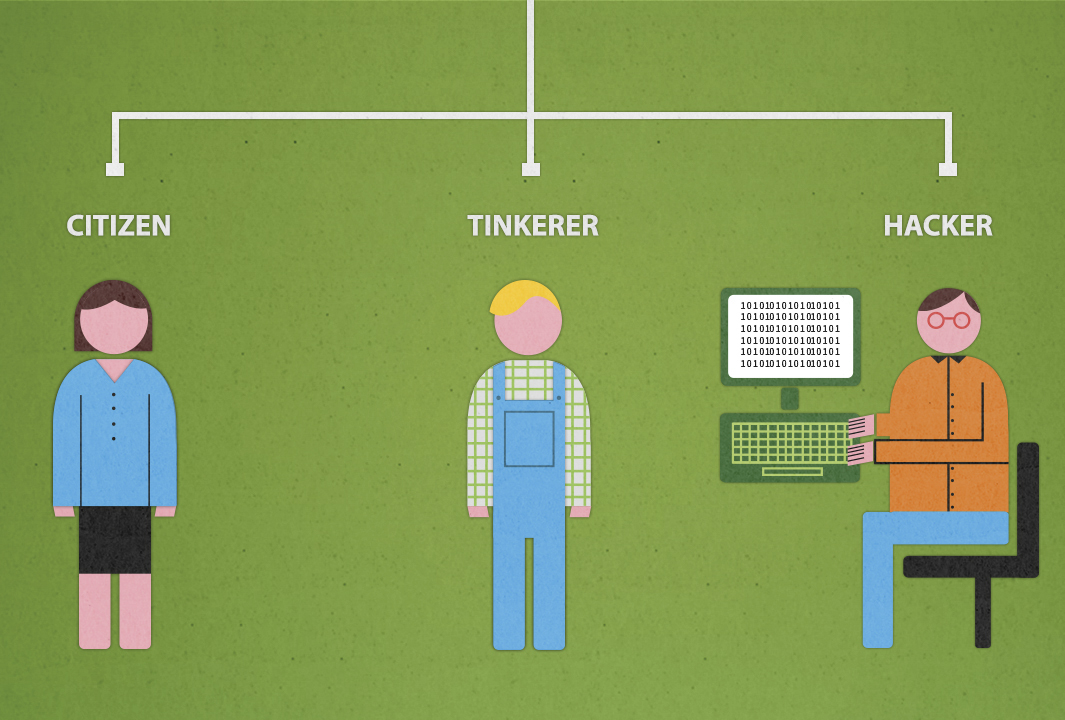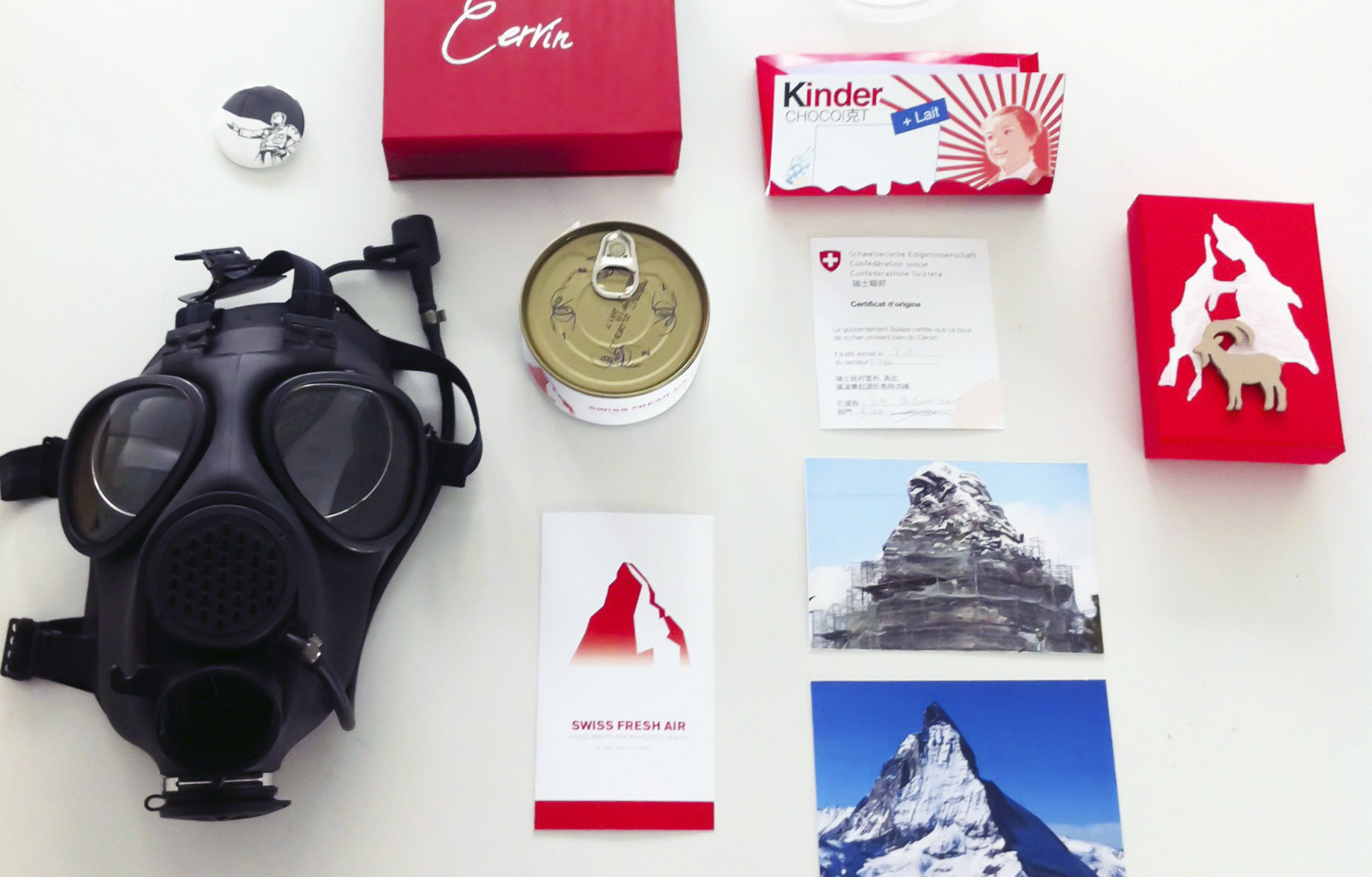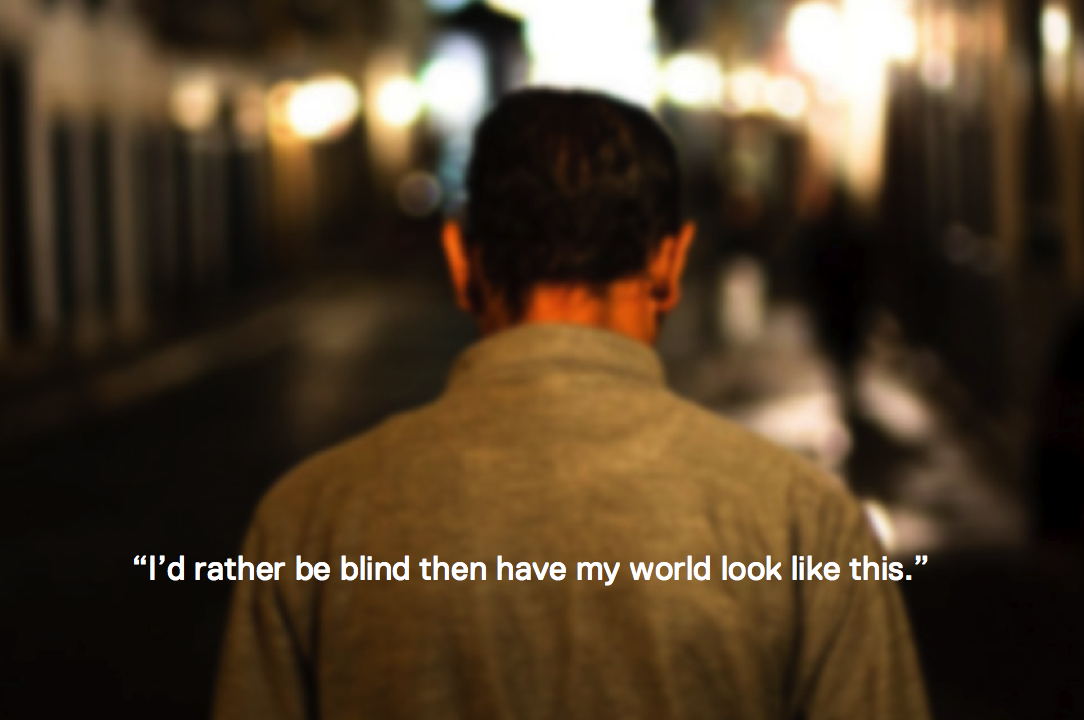INTRODUCTION BY ANAB JAIN
Whilst our practice is primarily project-led, whether thats client-focused, commissioned or self initiated work, we also like to continually find new ways of exploring the theoretical frameworks within which many aspects of our work are situated. With this in mind we have decided to invite people, whose ideas and research we find inspiring, to contribute to the Superflux blog, with the aim of creating an open space for discussion and reflection.
And so we are thrilled to have writer, researcher and futurist Paul Graham Raven kick-off this endeavour, by discussing the idea of Infrastructure Fiction in the context of his research work at the Pennine Water Group.

Photo Credit: Vivi Trujillo/Corporacion Fractal
My name’s Paul Graham Raven, and I’m a researcher in infrastructure futures at the University of Sheffield. Team Superflux have very kindly invited me to take the mic and talk about the potential of applying critical design practice and futures thinking to the infrastructural domain. What follows is very much a theory under development; feedback and critique is not just welcome, but actively encouraged.
To begin, though, allow me to quote one of my hosts:
“These projects bypass the established narratives about the present and future that create the hypnosis of normality, and in doing so allow for an emotional connection with the raw weirdness of our times, opening up an array of possibilities.” – Anab Jain, keynote talk from Next13
I’ve begun with this quote from Anab because it’s one of the neatest summaries I’ve found of what design fiction does. Defining how it does what it does, however, is a little more slippery, as it’s less about method than it is about results. We can say that design fiction tends toward the visual: images, videos, simulations, renderings, even theatrical performance. We can also say that in order to produce the desired effect – which we might sum up as a thought-provoking cognitive estrangement – a design fiction has to believe in itself, or at least give the impression of believing in itself. But rather like the presentation of a paper at a conference, the images and videos and so on are the medium, a delivery system for the memetic payload. The payload is possibility, the potential for a different world: a loud bang to break the spell of hypnosis.
Over the last year and half, a bunch of infrastructure academics and researchers, myself among them, managed to commit design fiction by accident.
#
“All-in-One” was an EPSRC-funded project involving researchers and investigators from the University of Sheffield’s Pennine Water Group, Cranfield University, De Montfort University and the University of Leicester. The project’s remit was unusually open-ended, especially for an infrastructure gig: the basic research question was “would it be possible to replace all the disparate utility infrastructures which we have currently with a system that uses one single unified infrastructure to fulfil all the needs of end-users?” (Research questions are the polar opposite of poetry.)
With a background in science fiction and speculative thinking, this was right up my street. But it was new territory for the civil engineers, modellers and risk analysis types I was working alongside; they were used to working in predominantly quantitative modes, with established systems, analytical frameworks and processes, with strict specifications and roadmaps to completion. Infrastructure is prosaic, practical stuff – it’s mundane, in the literal sense of being of-the-world. It’s about keeping the lights on; if you start getting all visionary, people might think you’re some sort of Tesla wannabe.
Design occupies an interesting position astraddle C P Snow’s two-cultures divide, with one foot in the engineer’s world of practical considerations and the manipulation of materials, and the other foot in the more arty realms of the unfettered imagination. Designers think differently to engineers because design has internalised the notion of critical production, of praxis as discourse, of reflexive rhetoric. To a designer, what a thing means is as important – sometimes more important – as what it does and how it does it.
My theory is that is if you combine a speculative writer like me with engineers, then the gestalt entity that results sits somewhat nearer the centre of the two-cultures spectrum. Just about where you might expect to find a designer, in fact.
#
The core output of the All-in-One project’s early stages were a handful of vignettes that described possible – if not necessarily plausible – solutions to the All-in-One question. These largely took the form of presentations in the established engineering project-proposal style: much talk of practicalities, materials, logistical problems and sociopolitical challenges.
But leave the format aside for a moment, and look at the actual ideas we came up with: a “city blood” circulatory system, wherein energy is carried to homes dissolved in water like oxygen is carried to our cells by haemoglobin; a rhizome-topology urban network of underground freight-delivery tunnels; the entire planet powered by orbital solar collector satellites, and eventually by a belt of photovoltaics on the moon; and a subterranean modular city based around the central need for water, energy and fresh air. These are combinations of prior speculations and actual contemporary tech developments (the “solar globe” vignette owes a debt to the Shimizu Corporation’s more ambitious blue-sky projects, for instance, and my own “Intertubes” vignette used the Foodtubes proposal as its jump-off point), and they were put together with an engineer’s eye for actual achievable systems, at least as far as technological plausibility is concerned. The links embedded above will let you download the “condensed flyers” we did toward the end of the project; you’ll note that these still speak the language of the proposal, of the project pitch. We were trying to convince our audience of the possibilities, because we were also trying to convince ourselves of them.
Remember what I said back at the beginning, about how design fiction has to believe in itself to do its work? I think if we’d had the knack of that, if we’d found ways to present them not as proposals but as faits accompli, we’d have had four chunks of infrastructure fiction on our hands.
#
Why would anyone want to do design fiction about infrastructure, though? That’s not just a valid question but an important one, and it calls back to that quote of Anab’s that I opened with. But first, we need to decide what “infrastructure” actually is.
Outside the world of civil engineering, infrastructure is profoundly unsexy. Oh, sure, there are people who can work up an aesthetic appreciation of a really good bridge, or admire the robust geometry of the classic British electricity pylon, or even enthuse about the mud-caked technological sublime of a tunnel-boring machine… but infrastructure’s function is not a thrill in its own right. That wasn’t always the case, though. The first electric lighting systems, the bridges and tunnels and engines of the pioneering railways, the epic sewers concealed by Bazalgette’s Embankment on the Thames: they were wonders of their age, and changed the way life was lived wherever they appeared2.
But we grew accustomed to them, and now – at least here in the West – take them for granted. Indeed, we might nowadays define infrastructure as being that part of the built environment which is only ever noticed when it stops working. At all other times, it’s lurking in the background, humming away in the interstices, invisibly providing you with, as the stacktivist Jay Springett puts it, “the means to not die” – plus, depending on the nation-state in which you find yourself, providing the means to achieve a variety of tasks and/or move around the landscape.
Even when you spend most of your working day thinking about infrastructure, it’s surprisingly hard to make the leap from the abstract to the actual – as illustrated by the number of times I’ve caught myself stood with my brow creased and my mouth full of toothpaste, thinking about ways to encourage more careful domestic water usage habits, while the tap pours a couple of litres per minute of meticulously and expensively treated water straight down the plughole.
#
No one would describe Douglas Adams as a “hard” science fiction writer, but I’ve long felt that he was better than many of his more serious contemporaries at communicating the paradoxical relationships we humans have with the world we inhabit. Near the start of the third Hitchhiker’s Guide novel, Life, the Universe and Everything (Adams, 2009), Arthur Dent and Ford Prefect observe the arrival of an unusual spacecraft (which, if I remember correctly, looks rather like a low-budget Italian bistro turned on its side) in the middle of Lords cricket ground during an important test match. This spacecraft remains unnoticed by the players, the crowd, or even the stolid BBC reporters covering the match; this is because it includes a device which generates a “Someone Else’s Problem” field, whose inventor realised that, while making something invisible is very tricky, making something look like someone else’s problem is much, much easier, as most people are predisposed to that position.
The challenge for infrastructure fiction is to dispel the Someone Else’s Problem field and reveal the elided centrality of infrastructure to pretty much everything we do. Its challenge is to explore what infrastructure means.
To do that, we’re going to have to kill off some assumptions.
#
From a designer’s point of view, infrastructure is a given. It’s the invisible and unacknowledged stuff – supply chains, communications networks, utility grids – that make the designed object producible, deliverable, and able to function as intended. Without infrastructure, there would be no designers. It’s the oxygen of the profession.
From an infrastructural engineer’s point of view, infrastructure is an intricate and interdependent web of entangled systems which ends at the point where it goes through the wall of your home, factory or office, thus granting the occupants the ability to do a variety of things, starting with not dying.
Appropriately enough – or so you’d think – these are both structuralist conceptions: understandings of a system in terms of what it does and how it does it. Capacities, voltages, efficiencies, safety features, diurnal demand profiles, materials, specs… engineering bread’n’butter, in other words.
Both of these conceptions are both right and wrong.
#
The first assumption that needs to die: that infrastructure enables designed objects. As the old saying goes, the problem is that it’s not even wrong; it’s just one-sided. The relationship between infrastructure and designed objects is duplex, a synthesis. The multiplication of designed objects, of tools and machines and appliances, both necessitated and enabled the construction of infrastructure, which in turn enabled a further proliferation and multiplication of appliances. Look at the history of electricity grids, for instance; the basic physics had been understood for quite some time before anyone came up with useful and affordable (and safe) ways to use this new phenomenon, but selling those appliances was dependent on there being an infrastructure to connect them to. Neither sprang fully-formed from the Zeus-brow of human invention. They co-evolved; they’re still co-evolving. (Though one could make a good argument that the designed objects are presently out-evolving the infrastructure, at least in some locations.)
The second assumption that needs to die: that infrastructure ends at the wall of your house. This is a little like assuming that the chunky plastic pistol-shaped thing with a cable coming out of the handle is what drills holes in your walls. It is the drill-bit that drills the holes; the motor unit of the power drill simply enables you to use the drill-bit to make bigger, deeper holes more quickly, and in a greater variety of materials than you could make using elbow grease alone. The power drill is not the tool; it is a function-specific extension of the infrastructure, an interface between the tool and the abstract world of harnessed energy.
When you connect a device to an infrastructure, the latter is effectively subsumed by the former. It’s a sort of metonymy: the power and potential that we imply when we speak of a power drill is actually the power and potential of the electricity grid, an electrical loa riding the horse of the drill.
You don’t believe me? Unplug the power drill from the wall, take it somewhere there are no wall sockets. Or take a nicely chromed faucet to some place without a water distribution mains, or a smartphone to somewhere where there’s no signal.
Ain’t much use to you now, is it?
This is what you see when the spell of Anab’s “hypnosis of normality” is broken around infrastructure. Design fiction is getting pretty skilled at problematising the power drill (faucet, smartphone, whatever) from the perspective of the user; what infrastructure fiction needs to do is get skilled at problematising the tap as seen from the other side of the wall.
#
(As-yet-untested thesis: a functional and/or designed object which in no way requires or depends upon an infrastructure can itself be considered a sort of infrastructure.
The more you think about it, the more you realise how tiny a category of things that actually is.)
#
There was no predefined methodology for the All-in-One vignettes. When we started in on them, all we had was a broad blue-sky research question and a wiki stuffed with ninety or so new or improved technologies; each subgroup of the project team set out to answer the former using items taken from the latter.
As such, they’re not a matched or complementary set of futures like you’d get from the classic 2×2 matrix. Each vignette reflects the assumptions (and the obsessions) of its creators. In the long run, infrastructure fiction practice may want to avoid this sort of haphazardness, but it might be beneficial at this early stage. After all, critical design is a critique of design, an inherently reflexive undertaking. So critical infrastructure design should surely do something similar: expose flawed heuristics and frangible assumptions, especially those of its own practitioners.
There’s an subtle difference between those who started with an idea and generated a world around it which would make it possible (as in the “Solar Globe” and “Intertubes” vignettes), and those who started with a set of problematic assumptions about the world and created an idea to solve them (as in the “Subterrania” vignette). This is a tension I see a lot of in the nascent discipline of science fiction prototyping; the term has been popularised by Brian David Johnson of Intel in his book of the same title (Johnson, 2010), which makes a case for the writing of science fiction narratives as a method for extrapolating the consequences and implications of new ideas, technologies or phenomena.
Bruce Sterling talks about design fiction as being diegetic prototypes, as “stories that tell worlds”: the object or product or service in the foreground implies the social, political, economic and technological dimensions oif the storyworld in which it must be assumed to exist, and it is this implication of diegesis that does the “work” of design fiction. One of the difficulties I have with Johnson’s approach (which I’ve been wrestling with in a paper currently under review at Technological Forecasting & Social Change) is that it explicitly subordinates the diegesis to the novum. Much like the classic Gernsbackian science fiction story, the idea is the star, and everything else follows from that; the world is assembled so as to accommodate and extrapolate the idea. Or, to put it another way, diegetic prototyping “creat[es] ‘pre-product placements’ for technologies that do not yet exist” (Kirby, 2009). Such practice can be (meta)critical, as in much of what we think of as design fiction, but Johnson’s approach is more advocative; design fiction uses the foreground to make you think about the background, while Johnson’s mode of prototyping uses the background to make you think about the foreground.
To me, this looks like a case of cart before horse – in fact, I’d argue it accurately reflects the problematic mindset of contemporary tech-biz approaches to innovation, but that’s a rant for another day. As suggested above, new technologies and infrastructures alike came into existence as a result of the continuing socioeconomic interactions of people and other already-existing technologies and infrastructures; as such, you need to do a bit of thinking about the world before you can do any sensible thinking about a new thing that you’re proposing to introduce to said world.
That’s not to say Johnson’s wrong, though. In fact, I think the All-in-One vignettes show that you get different sorts of prototype from each approach – but I need to do a whole lot more experimentation and tinkering with techniques before I feel I can quantify those differences, and what value they have. My theory is that a reversed approach might be more useful at the infrastructural scale: that one can start by imagining a coherently problematic world or worlds, much as you might with a 2×2 matrix, and allow it/them to suggest objects or products or services that might come into being as a response to such; “worlds that tell stories”, in other words3.
#
What keeps our vignettes from being true design fictions is their format: they are proposals, not yet convinced of themselves. We were still thinking in engineering terms when I finally realised how close we were to doing design fiction: thinking about feasibility, roadmaps and path-dependecy, about practical barriers to actualisation and so forth, as opposed to making the design-fictioneer’s leap and imagining the problem already solved, so as to ask what that solution might tell us about the problem that we hadn’t already noticed.
Convincing engineers that feasibility can be handwaved away in order to focus on meaning and implication is surprisingly difficult, as it goes against every instinct of their practice. I got there in the end with my colleagues, but the approach needs to better systematised and tested before it’ll float easily with an unprepared audience; that systematisation is what I hope to spend the next few years working on.
But imagine for a moment that our “proposals” concretised properly; imagine for a moment we’d had the skills and resources to make true design fictions of them. Imagine them being convinced of themselves, delivered as slick three-minute IPO promo videos, as guided tours of installations or facilites, or as reports from industrial spies or saboteurs. Imagine them narrated by a non-engineer: by an eco-activist, a ruralist refusenik, a hypernationalist political firebrand, a ubicomp urbanite, a lobbyist for Big Carbon, by Joe Sixpack or a Daily Mail NIMBY. Imagine them as faits accompli, presented in a manner that elides their fictionality.
See? Design fiction, of a sort.
#
While it’s satisfying to retrospectively identify the All-in-One vignettes as a form of design fiction, or even to coin the term “infrastructure fiction” for them, the question remains: what use are they?
For the Superfluxian audience, such a question is probably (hopefully?) anathema: design’s internalisation of critique makes the point moot. They’re thought experiments, exercises in reflexive critique of both practice and principle. The ends justify the means, right? So all I need do is remind you to stop thinking that infrastructure is Someone Else’s Problem. Unless you’re spinning wool from your own sheep or whittling wooden spoons, everything you do touches (or is touched by) infrastructure. This means there’s a whole new layer of questions you could be asking in your practice – and as climate change, resource distribution inequity and fragile global supply chains become increasingly dominant forces in the chaotic megasystem of the world, they’re questions you need to be asking.
To my colleagues in engineering, and to businesses and agencies thinking about innovation and infrastructure and the troubled times ahead, I would say this: you have been trained, and trained well, to imagine the possible as constrained by the plausible, for what you imagine must be buildable. That’s as it should be… but you must learn to switch it off from time to time.
This isn’t so much about thinking outside the box, that most tired of innovation cliches; if anything, it’s about thinking about the box, asking how and why the box constrains you. It might help to think of vignettes and infrastructure fictions as a type of theoretical model, albeit one that is almost entirely qualitative. The point is not to see whether they hold up to the tests of physics, or whether they can be evaluated against cost, resilience or feasibility; indeed, it is to be expected that most infrastructure fictions would fail at least one of these types of test. And therein lies the real point: failure is instructive, and the failures and flaws of imaginary systems at this sort of scale – not to mention the circumstances which might influence the likelihood or otherwsie of that failure – are impossible to explore in reality.
Design fiction is a sandbox, a test-bed, a gedankenexperiment; it’s the technological archaeology of imagined futures. If design fiction is a discourse both in and around start-up culture and bleeding-edge technologism, then infrastructure fiction can do the same thing for global sustainability, infrastructure policy and the iteration of appliance functionality. It can break the hypnosis, collapse the Someone Else’s Problem field. It can make infrastructure legible – and once you can read a story, you can write it a new way.
Of course, you can still do infrastructural engineering without thinking about the context in which you’re doing it; we’ve been doing that for the last hundred years or more, after all.
But look where that got us.
Endnotes:
1 – Tesla’s place in the geek canon is not echoed in the trad engineering canon; indeed, I suspect that’s a big part of why he’s in the geek canon at all.
2 – This sensawunda lives on in attenuated form in the collective culture of civil engineering; my favourite conference drinking game5 involves taking a drink every time a presenter or panellist speaks in reverent tones about the ambition and longsightedness of the Victorians. Regrettably, the culture has largely forgotten that those genuinely astonishing projects were made possible by a nigh-total lack of regulation, and a class system that permitted the systematic exploitation of the navvies.
3 – I’m thinking of calling it “mimetic prototyping”, because Plato isn’t around to call me out in an angry blog-post for misusing the other half of his dialectic.
4 – We did try making some videos, but the main thing they communicated was that the making of videos is best left to people who know a lot about making videos, or at least those who have the time and resources to make a proper go of it.
5 – To be totally clear, there is no actual drinking involved. Well, not during the conferences, anyway.
Works cited:
Adams, D. Life, the Universe and Everything. Pan, London, 2009
Johnson, B. D. Science Fiction Prototyping: Designing the Future with Science Fiction Morgan & Claypool, San Francisco, CA, 2011
Kirby, D. “The Future Is Now: Diegetic Prototypes and the Role of Popular Films in Generating Real-world Technological Development.” Social Studies of Science 40.1 (2009): 41–70.
 INTERNET OF THINGS ACADEMY
INTERNET OF THINGS ACADEMY


 FAILED STATES
FAILED STATES 





 MUSEUM OF FUTURE GOVERNMENT SERVICES
MUSEUM OF FUTURE GOVERNMENT SERVICES 


 SUPERFLUX TALK @FABRICA
SUPERFLUX TALK @FABRICA  STAYING WITH THE TROUBLE
STAYING WITH THE TROUBLE  DESIGN FOR CLIMATE CHANGE
DESIGN FOR CLIMATE CHANGE